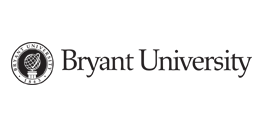Intercomprehension of the Romance Languages in the L3+ University Classroom: Bridging the Gap Between Student Perceptions and Abilities
Document Type
Book Chapter
Keywords
SoTL; scholarship of teaching and learning; intercomprehension; multilingualism; L3+; linguistic proximities; romance languages; linguistic repertoire; metalinguistic awareness; student perception
Identifier Data
978-1-83982-129-5
Publisher
Emerald Publishing Limited
Rights Management
Copyright © 2021 Cedric Joseph Oliva, Alan Gómez Larriva
Abstract
In the context of American institutions of higher education, the practical implementation of strategies associated with the development of L3+ or multilingual education often remain difficult to implement. Furthermore, students who reach the university level with pre-acquired bi/multilingual and bi/multicultural skills may perceive their competencies as trivialized and undervalued due to the lack of linguistically relevant opportunities available to them.
By contrast, the recent implementation of a multilingual course titled “Intercomprehension of the Romance languages: a pathway to Multilingualism,” at California State University, Long Beach (2014–2018) and St. Lawrence University (2018) offers bi/multilingual students the tools to develop skills geared toward language learning in a continuous effort to appraise, nurture, and upraise the ever-growing linguistic diversity present among students and faculty members in universities across the United States. This course and its iterations specifically benefit students’ pre-existing bi/multilingual competencies while offering them opportunities to reinforce and expand their multilingual repertoire. Students learn how to read in 5+ Romance languages, reinforce their knowledge of English, as well as of their Romance language, all while strengthening their metalinguistic awareness by learning how to navigate a larger repertoire of either foreign or unknown related languages.
In addition to discussing the pedagogical and theoretical framework of the course, the authors propose to explore how this innovative approach favors the development of multilingualism among students in North-American universities by examining course demographic data collected from several of these courses and key results relating certain aspects of students’ initial contact with new languages through intercomprehension.




Comments
https://doi.org/10.1108/978-1-83982-128-820201005